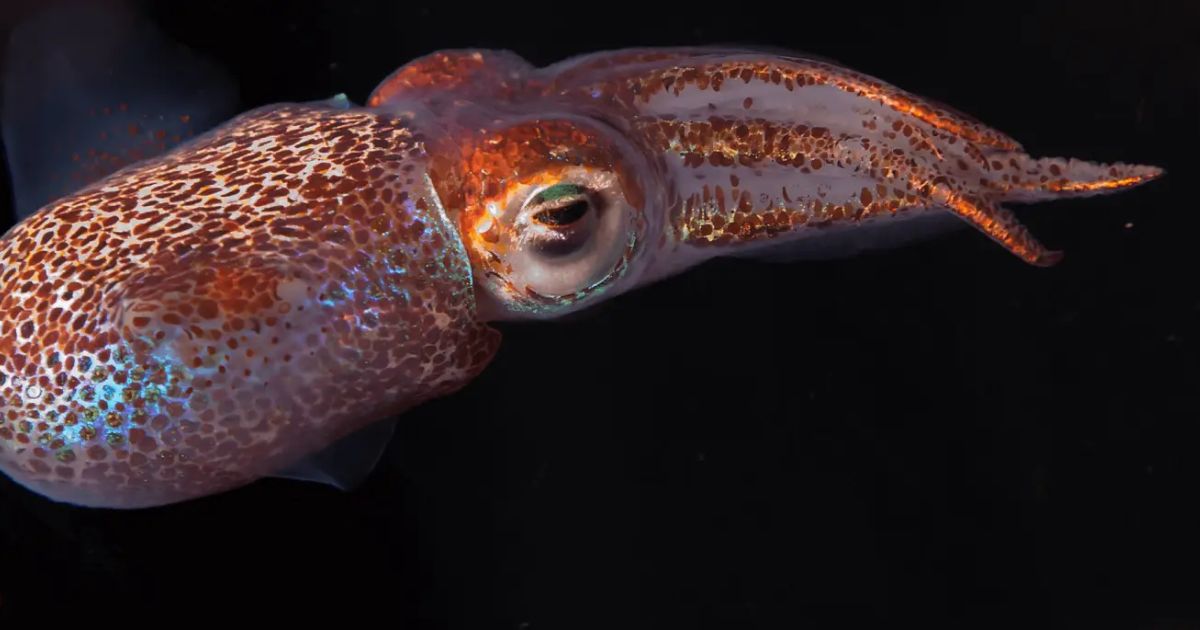Study reveals impact of ocean warming on symbiosis between Hawaiian bobtail squid and luminous bacteria
Research published today in the scientific journal Global Change Biology and coordinated by MARE researcher Rui Rosa reveals that rising ocean temperatures could compromise the hatching of the bobtail squid Euprymna scolopes and its symbiotic relationship with luminous bacteria, negatively affecting the squid's nocturnal camouflage strategy and making it vulnerable to predation. 
Some animals, such as fireflies, can produce light in a process known as bioluminescence. But most bioluminescent species actually live in the ocean, including around 80% of all known luminous species. This light can be generated directly by the animal or through symbiosis with luminous bacteria housed in specialized organs.
This is what happens in sepiolids, small cephalopod molluscs that inhabit sandy coastal areas, and which exhibit symbiotic bioluminescence. During embryonic development, they form a specialized luminous organ that is colonized by luminescent bacteria in the first few hours after hatching. The light produced by these bacteria is used by the animals as camouflage at night.
The team, made up of researchers Eve Otjacques (MARE), Jatico Brandon, Tiago Marques, José Xavier (MARE), Edward Ruby, Margaret McFall-Ngai and Rui Rosa, wanted to understand how the increase in temperature, the acidity of the oceans and the intensification of extreme phenomena such as marine heat waves, impact on the symbiosis between the Hawaiian squid species Euprymna scolopeso and the luminous bacteria Vibrio fischeri.
The results are clear: the increase in temperature reduces hatching success and post-hatching survival, requiring a higher density of bacteria for symbiotic colonization to occur. Even when it is established, the symbiosis tends to deteriorate over time in warmer waters. The study also revealed that situations of thermal stress such as these compromise the complete formation of the specialized bioluminescence organ where the animal stores a “reserve” of bacteria for adverse conditions.
This research shows that, just as corals lose their symbiotic algae during bleaching episodes, these small cephalopods also suffer significant losses in their symbiotic relationships in the face of thermal stress. The breakdown of this symbiosis directly affects their ability to camouflage at night, making these Hawaiian sepiolids more vulnerable to predation, which can have significant ecological consequences in the shallow waters where they occur.
“When we think of the impact of temperature on symbiotic animals, we usually think of coral bleaching. Here, we showed that the symbiotic cephalopod can also 'bleach', being sensitive to high temperatures in the early stages of life. What was also surprising was the incomplete formation of the light organ at hatching, as if development had been interrupted before the last stage of development.” says Eve Otjacques, author of the study.
The breakdown of this symbiosis directly affects the ability to camouflage at night, making these Hawaiian sepiolids more vulnerable to predation, which could have significant ecological consequences in the shallow waters where they occur.
To access the article click HERE
Text by Vera Sequeira
Cover photo by Margaret McFall-Ngai taken from Animalia.bio
